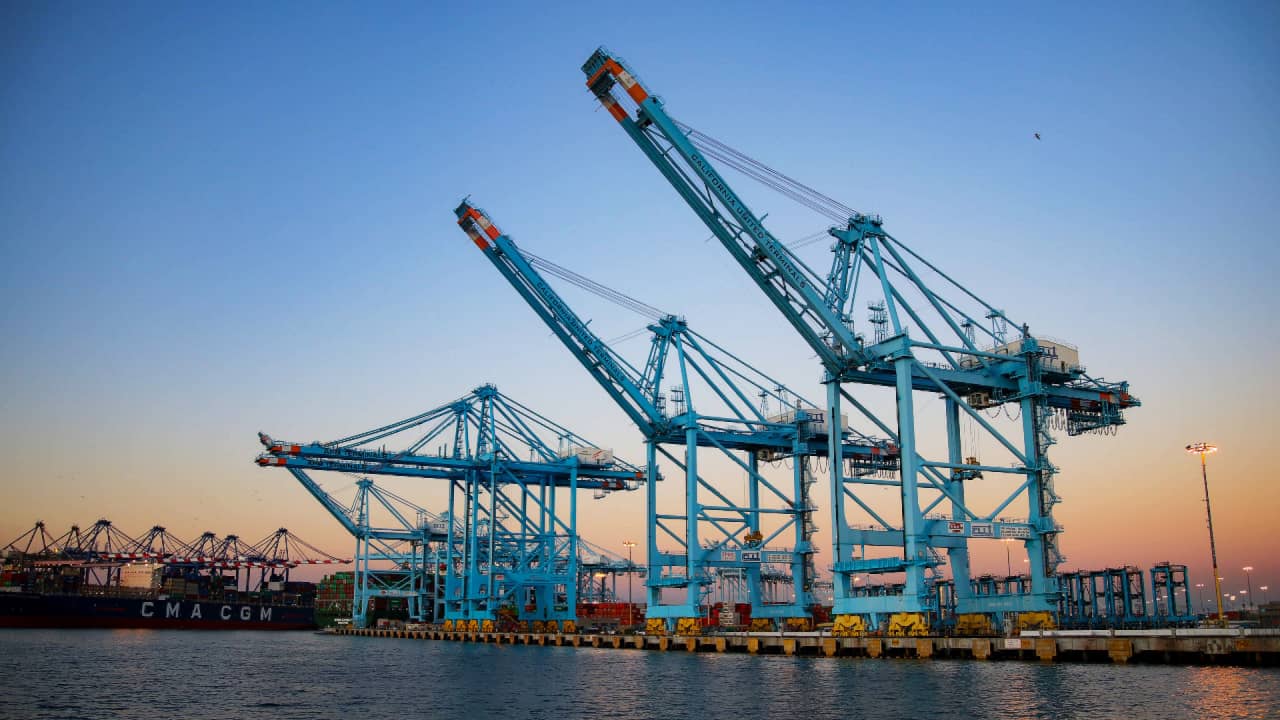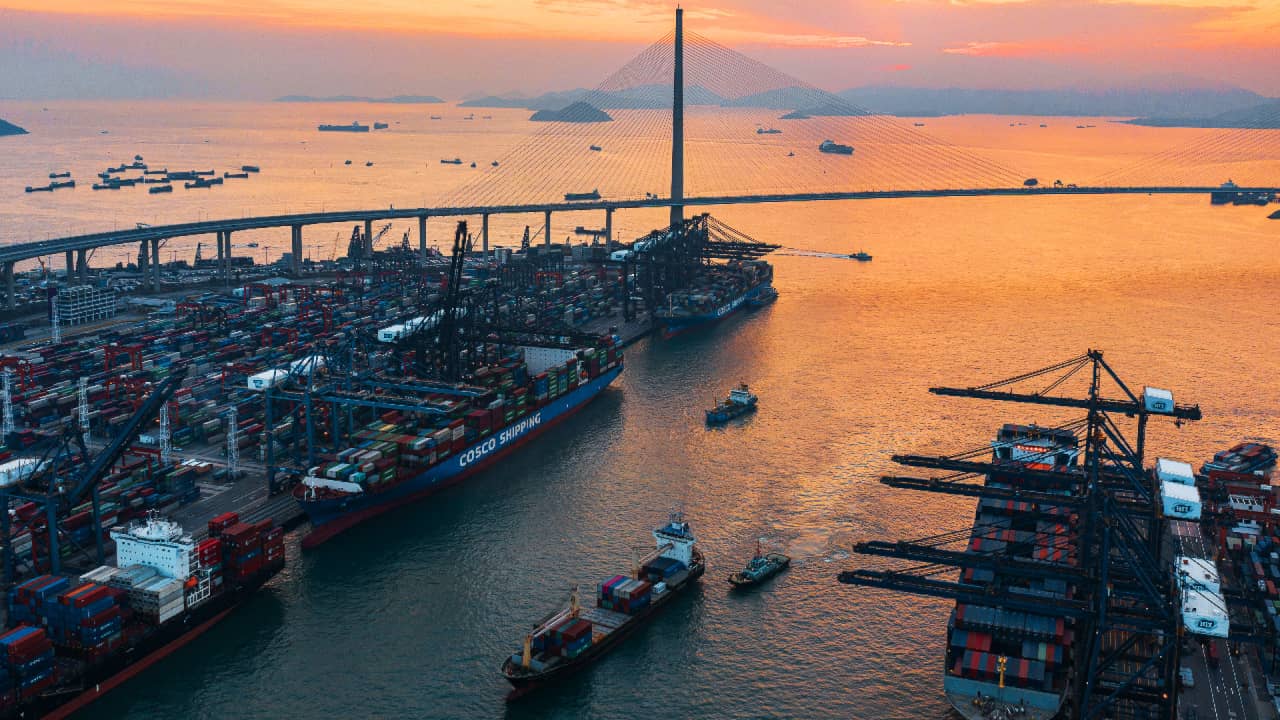
Reducing Container Volumes, Declining Freight Rates, Excess Capacity – the Current State of Global Supply Chain
6-minute read
The global economic outlook appears to be deteriorating further amid slowing growth and elevated inflation levels, comments Danish shipping and logistics group A.P. Moller-Maersk.
As a result, global container volumes continue to fall with negative growth in virtually all the main markets.
Headwinds are continuing to grow for the global economy as the conflict in Ukraine, high inflation levels and weakness in key manufacturing and property markets in China weigh on the macroeconomic outlook.
China continues to battle sporadic COVID-19 outbreaks, despite easing restrictions, and current and future demand headwinds remain significant.
Inflationary pressures in both the US and Europe remain elevated, with the consumer price index (CPI) holding steady over the summer at around 8.2%, while in Europe, inflation is at a record high, with the CPI climbing to 9.9% in September.
Producer price inflation in Europe – the price paid by manufacturers for raw materials and goods – is even higher at around 40%.
The fall in exports led to a further decline in global container trade volumes from June-August, and most regions are now seeing negative growth.
Ocean spot freight rates have also continued to see a dramatic fall and are now close to levels seen in the second half of 2020.
Supply chain disruption an evolving situation
Despite sporadic outbreaks of Covid in China, current maritime trade dependent on imports from Chinese ports does not appear to be disrupted. Maersk reports that at the end of November, Asia’s main ports were in a healthy situation with a waiting time of around 0-2 days. China’s terminal operations and productivity are under control.
However, the Oceania market continues to be negatively impacted by supply chain disruption. “Both as a result from previous protected industrial action in Australia and congestion in the upper North Island supply chain in New Zealand.”

North America
North American ports’ situations have improved recently, but Maersk says they are still seeing some delays of vessels because of the downstream impact of previous congestion.
Overall, Asia Pacific to North America space is available. While port congestion has eased on the US West Coast and in China, it remains a problem on the US East Coast, although it is trending downwards.
Maersk adds, “US East Coast port congestion deviates from port to port, with overall waiting time slightly increased to 1-3 days, Baltimore increased to seven days and Houston congestion improved to five days.
Europe
Ports in North Europe are gradually recovering, following lower demand and, therefore, lower pressure on terminal operations.
Arrival waiting times are generally less than one day. Yard densities remain critical in many ports, most notably due to increased dwell times of import units.
“Over the past few months, we have seen strikes in numerous ports in North Europe, most recently in Liverpool and Felixstowe. Conversations between unions and terminals are now focused on 2023 salary revision, and no protest actions are expected for the rest of the year.”
CMA-CGM notes declining freight rates
Declining demand since mid-year has prompted a return to more normal international trade flows and a significant reduction in freight rates, as observed by CMA-CGM chairman and CEO Rodolphe Saadé in the shipping line’s recent third-quarter financial results.
The CMA CGM Group once again recorded strong results in the third quarter.
“Over the past two years, we have significantly strengthened our financial structure and developed our business through the entire supply chain,” said Mr Saadé.
The third quarter of 2022 was shaped by persistent geopolitical tensions, which spurred higher inflation and dragged down consumer spending, which is increasingly shifting to services in the wake of COVID-19.
These factors dampened freight demand but also helped to ease a certain amount of port congestion.
The group expects energy costs to remain high, weighing directly on its operating expenses and, more generally, on consumer spending, particularly in Europe.
This inflationary environment, combined with monetary policies, is clouding the outlook for economic growth, despite measures to support consumer spending, again notably in Europe.
The group expects to see a faster return to more normal freight rates in the fourth quarter and lower margins.
Therefore, it closely monitors geopolitical developments and their potential impact on the economic outlook. Nevertheless, it remains confident in its financial strength and ability to adapt.
Excess capacity driving down freight rates
The release of excess capacity by shipping carriers during mixed economic conditions has driven down freight rates for much of the year. A Drewry webinar recently concluded that it is difficult to predict how far freight rates would fall “and how far the super-profits will carry over”.
Simon Heaney, the principal author of Drewry’s popular weekly update on the container shipping sector, said FY23 could be the first time in a century that a health crisis results in a world slump.
“Global recession is very much a threat” with three key factors: an end to the Ukraine war being a long shot’, “incredible strength in the US dollar and slowing growth in China. 2022 has been a year of considerable disruption, with the ongoing Covid-Zero strategy in China (half relaxed only of this week), labour strikes in UK and European ports, slowed migration and labour pressures, port congestion, and all leading to turbo-charged inflation.”

Carriers have various levers that they can exercise to influence fleet capacity in a downturn.
Drewry forecasts an effective capacity increase of 11% in 2023 before any use of blank sailings. They consider it is impossible to predict the degree of blank sailings but expect these to be less frequently used to cover soft demand months.
They expect ~600,000 tonnes of vessels will be scrapped in 2023, the second highest level since 2016 when 660,000 tonnes were pulled from fleets.
Drewry has the end of 1H23 as the timeline for a return of port productivity to 2019 levels. As congestion fades, they see only 7% of capacity being removed by bottlenecks at ports. But they continue many risks prevailing to prevent a total end to congestion, notably that of labour disputes in a high inflationary environment.
Back in January 2022, according to Vespucci Maritime, 13.8% of global capacity was unavailable due to delays in bottlenecks. By the end of August, this had declined to 7.9% of the global fleet being unavailable. Meaning that 50% of the capacity which was removed from the market in January had been released back into the market.
“On a year-on-year basis, this means a global capacity growth of approximately 10% in August,” Lars Jensen, CEO of Vespucci Maritime, said back in October. “If this pace of improvement continues, it implies that the effect of capacity reduction due to bottlenecks will be fully eliminated in Q1 2023.”
He said that from a fundamental global supply/demand perspective, there is no longer a fleet capacity shortage.
“We are now entering the phase where the market in places is now beginning to go below pre-pandemic levels as the correction downwards from the historical high turns into a price war driving rates down.”
The collapse in demand can be seen in comparison to pre-pandemic levels.
Demand measured in TEU has declined -2.6%, and demand measured in TEU Miles is now -7.6% lower than the level in 2019, he says.
“This rapid decline in demand is caused by the onset of an inventory correction, mainly by North American and European importers. Inventory corrections always have a severe impact on container volumes.
“Following an inventory correction, there is always a subsequent surge in demand as importers then strive to return to normal operations.
“This is, for example, what we saw in the surge of demand in 2010 following the financial crisis or in the summer of 2002 following the inventory-driven recession in the US in 2001.
“Suppose the world only sees a mild recession presently, and inventory correction is the main driver behind the collapse. In this case, we should expect a cargo surge already in summer 2023 and spot rates will surge again.
“However, suppose the world economy enters a more profound and prolonged recession on the back of inflation and geopolitical turmoil. In this case, we might see a subdued 2023 where the cargo surge only materializes in the lead-up to Chinese New Year 2024.
“In either case, the current collapse will cause a large amount of operational turmoil in the next few months as carriers will continue to blank large amounts of sailings in an effort to halt the slide in spot rates.”
Source: The New Zealand Shipping Gazette
P.S. Easy Freight Ltd helps New Zealand importers & exporters to save money on international freight and reduce mistakes by guiding how to comply with Customs and biosecurity rules.
➔ Contact us now to learn how we can assist you.
